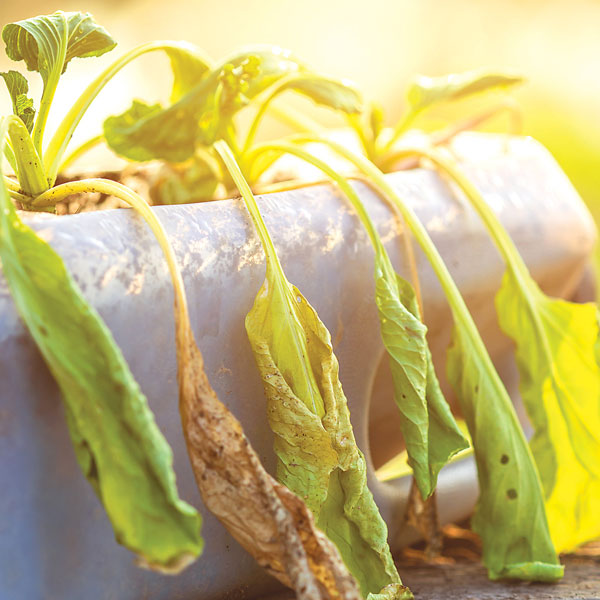Beyond aphid and powdery mildew, great challenges hide in weeds. Gardeners inevitably encounter these tests of body and will.
This year was frustrating for Sacramento gardeners. Extreme summer heat lingered into “Hot-tober,” dealing damage and triggering exasperation. Weather, a perennial challenge, elevated its threats to botanical happiness.
At the Fair Oaks Horticulture Center, I listen to disheartened gardeners. This year we discussed perished fruit trees, baked perennials, uncooperative vegetables. For some people, it was too hot to venture outdoors.

Reliable practices from past gardens may not be suitable for extreme weather. Once heat extracts moisture from the soil and bakes the surface, plants become stressed. Stressed plants decline and invite damaging pests that seek out the weakest prey.
Adequate irrigation, mulch and protection from sun give plants their best chance for health and survival. Drip irrigation with a controller/timer ensures plants won’t miss essential watering cycles in scorching weather.
Sacramento’s tree canopy is a blessing, especially if it provides late-afternoon garden shade. If not, shade cloth will reduce the damage and is essential during periods of extreme heat. Any late afternoon shade you can provide is helpful.
Mulches—wood chips, bark and straw for veggies—help retain soil moisture and reduce soil-borne diseases and weeds. I’m too often reminded by gardeners that they didn’t mulch around plants. My thoughts: “If you had only spread a 2- to 3-inch layer of mulch around that tomato plant…”
Some gardening challenges are inevitable. As we age or deal with disabilities, simple tasks become burdensome. Our bodies remind us when it’s wise to slow down or change course.
What once was a single day of wielding a shovel to turn garden soil may require two or three days. Same with weeding a flower bed or pruning overgrown shrubs.
As strength and dexterity ebb, getting down becomes easier than getting up.
Vegetable and flower gardeners, young and old, can ease the difficulty by planting in raised beds, 12 to 24 inches high. Newer elevated bed kits that raise planting surfaces 30 to 36 inches above the ground are even better for aching joints. Galvanized livestock watering troughs are another option.
Tools, off the shelf or makeshift, can ease the pain and workload. An old broom handle is long enough to poke planting holes for seeds while standing. Long auger drill bits work well for bulbs and plants if the soil isn’t heavy clay or littered with rocks.
Rolling chairs allow for a more comfortable seated position while planting and weeding. In recent years, choices and styles have greatly improved.
Another bonus: These helpful tools and products make thoughtful holiday gifts.
I encounter many younger gardeners. They are enthusiastic, eager to learn, but confront endless obligations that compete with their gardening time. For younger gardeners, time can be a burden.
A weekend soccer tournament might mean nobody watered the plants and weeds grew another 6 inches. Family commitments turn good intentions into a whitefly infestation. Gardens require regular attention, but so do work, children and family matters.
When time is scant, consider downsizing. Plant only a few containers of flowers or three or four vegetables, rather than a dozen. Houseplants can be a gateway to gardening when career, kids and family are the focus.
Start small, meet nature halfway and avoid getting overwhelmed. Each season teaches new skills, what to avoid and how to manage time.
Persistence is the bane of all challenges. Most gardeners carry the persistence gene. It’s a dominant trait.
Dan Vierria is a University of California Cooperative Extension Master Gardener for Sacramento County. He can be reached at masterg29@gmail.com. For answers to gardening questions, contact UCCE Master Gardeners at (916) 876-5338, email mgsacramento@ucanr.edu or visit sacmg.ucanr.edu. Follow us on Facebook and Instagram: @insidesacramento.
















